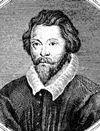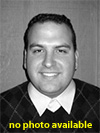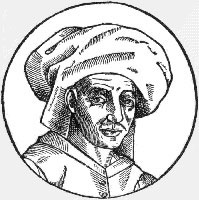renaissance (1450 - 1600)
William Byrd
 Living in an age of conflict between Catholics and Protestants in England, William Byrd’s loyalties were divided between the two religions. He and his wife were devout Catholics, as were most of Byrd’s patrons. At the same time, he held positions in Anglican churches and wrote music for their services. After the sinking of the Spanish Armada in 1588, Byrd even set a poem by Queen Elizabeth I thanking God for defeating the Catholic Spaniards. Ironically, it is in the Anglican rather than the Catholic Church that Byrd’s music is most often heard today.
Living in an age of conflict between Catholics and Protestants in England, William Byrd’s loyalties were divided between the two religions. He and his wife were devout Catholics, as were most of Byrd’s patrons. At the same time, he held positions in Anglican churches and wrote music for their services. After the sinking of the Spanish Armada in 1588, Byrd even set a poem by Queen Elizabeth I thanking God for defeating the Catholic Spaniards. Ironically, it is in the Anglican rather than the Catholic Church that Byrd’s music is most often heard today.
Giulio Caccini
 Giulio Caccini was a singer, composer, and theorist active in Florence in the late sixteenth and early seventeenth centuries. Today he is known mainly for a single song, “Amarilli, mia bella,” often sung by beginning voice students. The Florentine musician’s significance goes far beyond “Amarilli,” however. In fact, Caccini helped create a new style of solo singing and a new type of musical drama – one that we now call opera.
Giulio Caccini was a singer, composer, and theorist active in Florence in the late sixteenth and early seventeenth centuries. Today he is known mainly for a single song, “Amarilli, mia bella,” often sung by beginning voice students. The Florentine musician’s significance goes far beyond “Amarilli,” however. In fact, Caccini helped create a new style of solo singing and a new type of musical drama – one that we now call opera.
Josquin Desprez
 In an era when music was generally performed a few times before being replaced by something newer, Josquin des Prez was a rarity: a composer who was remembered and honored long after his death. Throughout the sixteenth century, his works were cited in theoretical treatises and extensively quoted in the music of other composers. In 1538, seventeen years after Josquin died, Martin Luther extolled him as “the master of the notes, which must do as he wishes, while other composers must follow what the notes dictate.” Even in the seventeenth and eighteenth centuries, Josquin’s music was not entirely forgotten, while the nineteenth century saw him acclaimed (alongside Palestrina) as one of the two greatest composers of the Renaissance.
In an era when music was generally performed a few times before being replaced by something newer, Josquin des Prez was a rarity: a composer who was remembered and honored long after his death. Throughout the sixteenth century, his works were cited in theoretical treatises and extensively quoted in the music of other composers. In 1538, seventeen years after Josquin died, Martin Luther extolled him as “the master of the notes, which must do as he wishes, while other composers must follow what the notes dictate.” Even in the seventeenth and eighteenth centuries, Josquin’s music was not entirely forgotten, while the nineteenth century saw him acclaimed (alongside Palestrina) as one of the two greatest composers of the Renaissance.
Clément Janequin
 Along with Claudin de Sermisy, Clément Janequin was one of the two great masters of the sixteenth-century French chanson. His most famous chansons evoke phenomena such as bird calls (Le chant des oiseaux), street noises (Les cris de Paris), or the sounds of battle (La bataille). Although these works were popular during his lifetime, Janequin never achieved much professional or financial success.
Along with Claudin de Sermisy, Clément Janequin was one of the two great masters of the sixteenth-century French chanson. His most famous chansons evoke phenomena such as bird calls (Le chant des oiseaux), street noises (Les cris de Paris), or the sounds of battle (La bataille). Although these works were popular during his lifetime, Janequin never achieved much professional or financial success.
Giovanni Pierluigi da Palestrina
Although he wrote a considerable number of secular madrigals, Giovanni Pierluigi da Palestrina was primarily a composer of sacred music. He was extraordinarily prolific, writing at least 104 masses, over 300 motets, and many other religious works. Unlike almost any other composer, Palestrina has enjoyed steadfast respect. Writing in 1607, Agostino Agazzari called him “the savior of church music.” Almost 100 years after his death, Angelo Berardi described him as “the prince and father of music.” And after the publication of Johann Joseph Fux’s enormously influential textbook Gradus ad Parnassum (1725), Palestrina’s music became the primary model for composition students in the eighteenth and nineteenth centuries. Even today, composition students are almost always taught how to write in the style of Palestrina.
Salamone Rossi
Very little is known about the life of composer Salamone Rossi, nor is his music often heard today. Nevertheless, he is an extremely interesting figure, primarily because he was one of only a handful of Jewish musicians contributing to the tradition of European art music before the nineteenth century.